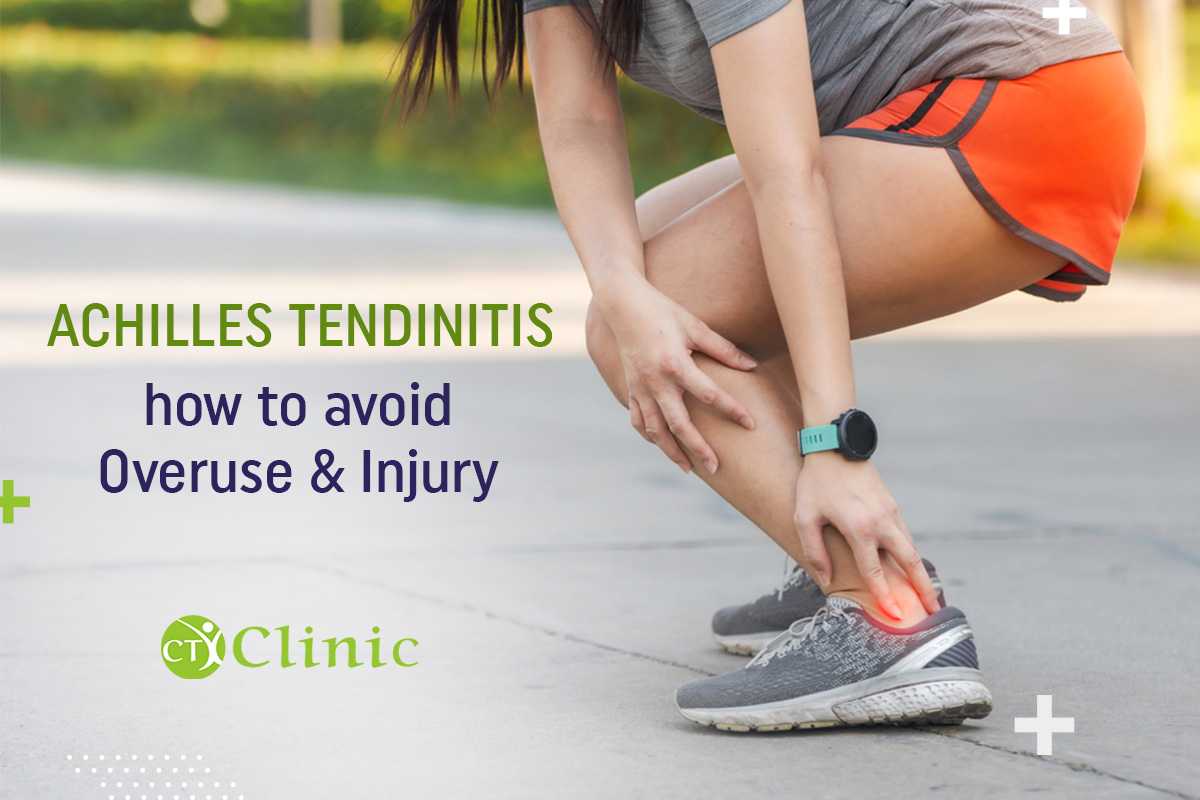Achilles Tendinitis: how to avoid overuse and injury.
Sports injuries are common, particularity in younger adults and children. Studies show that over 3.5 million children in the USA alone, are injuries as part of organised sports [1]. Achilles Tendinitis accounts for approximately 30% of sports injuries [2]. The Achilles the band of tissue that connects calf muscles at the back of the lower leg to your heel bone.
Achilles Tendinitis is caused by repetitive or intense strain on the Achilles tendon. This tenson is mostly when you walk, run, jump or push up on your toes [3]. Overuse of this tendon can cause damage and this can eventually cause severe pain, but this injury typically begins as a mild ache in the back of the leg or above the heel.
Luckily, this is something CT Clinic can help with; with over 20,000 pain-free patients CT Clinic cures complicated cases of pain using a technique called COPA therapy.
COPA therapy is a massage-based technique using a combination of chiropractic, Osteopath, Physiotherapy and acupuncture techniques. This allows the practitioner to target the pain in even the smallest of muscles and cure it. COPA therapy is a new methodology created by Ammar Sawaf who struggled with back pain when he was 17. His pain ended his career in Football and he soon discovered that no one had the skills to treat him. As a result, he studied and studied, gaining a degree in Traditional Chinese Medicine. This led him to create what is now known as CT Clinic.
Based in Greater Manchester, West Didsbury, CT Clinic is the home of innovative pain specialist Ammar Sawaf who founded his company in 2006. Mr Sawaf believes the source of the pain is muscle stiffness and uses his COPA therapy technique to cure his patients from pain completely. CT Clinic treats pain differently by focusing on the root cause of the pain, not just a cure. Many of our patients are told their pain is ‘untreatable’ and rely on painkillers to continue their daily lives.
This innovative treatment has been developed over the last 20 years, and now, with the help of Myton technology, Mr Sawaf hopes to prove this scientifically and innovate the way pain is treated beyond his private clinic.
Myoton technology is the only reliable machine in the world that can measure muscle stiffness in a non-invasive way, along with also measuring biomechanical and viscoelastic properties. The machine is very simple and shows the state of the muscles within 1 minute and that is why is used by NASA and over 600 universities around the world.
Mr Sawaf is determined to make a difference with COPA therapy, this would save billions of people and billions of pounds being spent on lower back pain treatment and painkillers. The success he’s seen in CT Clinic hasn’t gone unnoticed by his patients with over 65 five-star reviews on Google reviews. Mr Sawaf hopes this is the start of a major change in how pain is treated.
So, how can you avoid Achilles Tendinitis?
Luckily, there are many ways to avoid this injury while still continuing to exercise …
- Increase your activity level gradually. Allow yourself time to get stronger and improve without jumping in the deep end.
- Choose your shoes carefully. There should be adequate cushioning for your heel and firm arch support to help reduce the tension in the Achilles tendon.
- Stretch daily. Take time to stretch your calf muscles and Achilles’ tendon in the morning, before exercise and after exercise to maintain flexibility.
- Cross-train. Try replace high-impact activities such as running and jumping, with low-impact activities such as cycling and swimming.
Although we want to push ourselves to achieve the best results, it is important to listen to our bodies’ needs in order to minimise the risk of injury and pain. At home, mild cases of runner’s knee can be eased by things such as cold packs, elevating the leg and staying hydrated.
If you want any further information on how CT Clinic can help your pain, please visit our website www.ctclinic.co.uk or call us 0161 4597 034.
Author:
Ellen Maynard-Smith
Business Developer
(22/03/2022)
References
[1] Morrison, W (2018). Everything You Need to Know About Sports Injuries and Rehab. https://www.healthline.com/health/sports-injuries. [Last accessed 30/03/2022].
[2] Fromson, N (2021). Achilles injuries skyrocket as American returns to normal. Here’s how to handle them. https://healthblog.uofmhealth.org/wellness-prevention/achilles-injuries-skyrocket-as-america-returns-to-normal-heres-how-to-handle. [Last accessed 30/03/2022].
[3] Mayo Clinic (2022). Achilles tendinitis. https://www.mayoclinic.org/diseases-conditions/achilles-tendinitis/symptoms-causes/syc-20369020. [Last accessed 30/03/2022].

